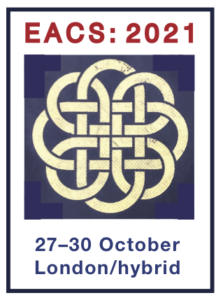Implications of historical M184V on use of dual dolutegravir/lamivudine ART
30 November 2021. Related: Conference reports, Antiretrovirals, Drug resistance, EACS 18 London 2021.
 Simon Collins, HIV i-Base
Simon Collins, HIV i-Base
Whether or not historically recorded lamivudine-resistant M184V jeopardises dual ART that includes lamivudine is a controversial issue.
Some doctors point to data suggesting that only a recent history of M184V within the previous five years has been linked to viral failure. Others question the ethics of studying suboptimal ART with potential dolutegravir monotherapy, despite the potential reduced fitness associated with M184.
This retrospective French study looked at risk of low level viral failure (2 x >50 copies/nmL or 1 x >200 copies/mL) in 695 people switched to dual dolutegravir/lamivudine with resistance results. Of these, M184V was documented in 105 (15%) and no M184V was in 590 (85%). Median time from resistance to the switch was 10 years (IQR: 3 to 14).
Participants were highly treatment experienced, but significantly more so if M184V was present. Median duration of ART was 21.3 years (IQR: 17.6 to 23.1) vs 8.8 years (IQR: 5.3 to 15.5) in the M184V vs no-mutation group respectively (p<0.0001). They had used significantly more median lines of ART (11 vs 4) and had been undetectable for longer (median 10.7 vs 6.7), both p<0.0001.
Overall, 9/695 participants reported viral failure, with similar rates in the two groups: 2/105 vs 7/590. Viral rebound was also only to <250 copies/mL in 4/9, including the 2 participants with historical M184V. This meant genotype results were only available for 4/9, none showing M184I/V on failure, with 4/9 also remaining on dual ART.
There were no differences in the rates of viral rebound by presence of recorded M184V (p=0.81) or within the M184V group when stratified by recency of the mutation (more than vs > less than five years ago), (p=0.94). However, follow-up on dual ART was also fairly short: median 1.2 years (IQR: 0.7 to 2.1) and similar in both groups (p<0.56).
Although the study concluded that viral failure was low in all participants, with no impact of previously recorded M184V, even if this was relatively recent, it rightly noted that longer follow-up was needed.
This is essential because of both the extensive duration of viral suppression and the long time since M184V had been recorded.
commentS
Although these results question whether M184V remains archived after 5, 10 or 15 years on suppressive ART, modelling might suggest that low or extremely limited viral turnover might just need longer follow-up. For context, viral breakthrough to dolutegravir monotherapy only occurs in a minority of people over a year (though with such significant resistance that this should never be used).
The need for longer follow-up was also raised in the panel discussion after the session, suggesting that 2-3 years follow-up might be a more appropriate minimum time in this long-suppressed cohort. Also, that the results are not appropriate for people with more recently document resistance to lamivudine.
Reference
Hocqueloux L et al. Archived mutation M184V does not increase virologic failure during maintenance therapy with dolutegravir + lamivudine in the French DAT’AIDS cohort. EACS 2021, EACS 2021, oral abstract session, 28 October 2021, 3-4 pm. Oral abstract OS1/2.
https://eacs2021.abstractserver.com/program/#/details/presentations/382 (abstract)
This report was first published on 14 November 2021.

